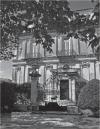Abstract
The main objective of this paper, was the comprehensive understanding of the kitchen as the living space wheremultiple cultural practices are amalgamated, where the intangible becomes matter and where the material becomesdisembodied. The study universe was formed by those located in the houses of the Mexican elite during the years1886-1916 and was analyzed with the tooling used for the study of everyday life in conjunction with those used in theanalysis of architectural space, being used many diverse sources of information such as plans, manuals of etiquetteand recipes. This analysis provides a look of the insight of the phenomenon of spatial compartmentalization, functionalspecialization and the relationship between material and symbolic idealization, expressed as a whole as the substantialbase of modern functionality in this region of Mexico. The continuity of this work presents many opportunities aswe can study the space itself deeper, their permanence, transformation, construction techniques, evolution of hometechnology and family dynamics, among many other possibilities:Apuntes is registered under a Creative Commons Attribution 4.0 International Public License. Thus, this work may be reproduced, distributed, and publicly shared in digital format, as long as the names of the authors and Pontificia Universidad Javeriana are acknowledged. Others are allowed to quote, adapt, transform, auto-archive, republish, and create based on this material, for any purpose (even commercial ones), provided the authorship is duly acknowledged, a link to the original work is provided, and it is specified if changes have been made. Pontificia Universidad Javeriana does not hold the rights of published works and the authors are solely responsible for the contents of their works; they keep the moral, intellectual, privacy, and publicity rights.
Approving the intervention of the work (review, copy-editing, translation, layout) and the following outreach, are granted through an use license and not through an assignment of rights. This means the journal and Pontificia Universidad Javeriana cannot be held responsible for any ethical malpractice by the authors. As a consequence of the protection granted by the use license, the journal is not required to publish recantations or modify information already published, unless the errata stems from the editorial management process. Publishing contents in this journal does not generate royalties for contributors.


